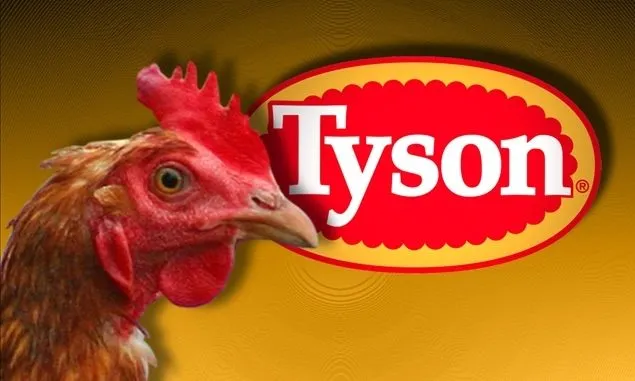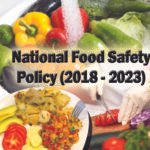The global food industry faces various risks, from supply chain disruptions to disease outbreaks. One of the most significant threats in poultry production is Avian Influenza (AI), commonly known as bird flu. In 2015, Tyson Foods, one of the world’s largest poultry producers, experienced a severe Avian Influenza outbreak that had substantial implications for the company and the broader industry. This case study examines the Avian Influenza outbreak at Tyson Foods, its impact on the company, and the broader implications for food insurance and risk management.
Background of Tyson Foods
Company Overview
Tyson Foods Inc., headquartered in Springdale, Arkansas, is a leading American multinational food company specializing in poultry, beef, and pork production. With operations spanning the globe, Tyson Foods is known for its extensive portfolio of brands, including Tyson, Jimmy Dean, and Hillshire Farm. The company’s vast supply chain includes farming, processing, and distribution, making it a key player in the global food industry.
The Avian Influenza Outbreak
Outbreak Overview
In early 2015, the United States faced one of the largest outbreaks of Avian Influenza in history. The outbreak, caused by the H5N2 and H5N8 strains of the virus, led to the culling of millions of birds across several states. The outbreak severely impacted the poultry industry, leading to significant economic losses and disruptions in supply.
Impact on Tyson Foods
- Infected Facilities: Tyson Foods experienced an outbreak of Avian Influenza at several of its poultry processing facilities. The virus spread rapidly, leading to the culling of infected and potentially exposed birds to prevent further spread of the disease.
- Production Disruptions: The outbreak caused major disruptions in Tyson’s poultry production operations. The company faced challenges in maintaining production levels, sourcing raw materials, and managing its supply chain. Processing facilities were either shut down or operated at reduced capacity due to the need for disease control measures.
- Economic Impact: The financial impact on Tyson Foods was substantial. The company faced increased costs related to disease management, including the culling of infected flocks, facility cleaning, and biosecurity measures. Additionally, Tyson experienced lost revenue due to decreased production and sales, as well as higher prices for poultry products resulting from reduced supply.
- Market Impact: The Avian Influenza outbreak led to significant volatility in poultry markets. Tyson Foods, as a major player in the industry, was affected by fluctuations in poultry prices and demand. The outbreak also led to a decrease in consumer confidence and concerns about food safety, impacting Tyson’s market position and brand reputation.
Implications for Food Insurance
Insurance Coverage and Claims
The Avian Influenza outbreak at Tyson Foods highlights several important aspects of food insurance and risk management:
- Animal Insurance: Animal insurance provides coverage for losses related to the death or culling of livestock due to diseases such as Avian Influenza. For Tyson Foods, having comprehensive animal insurance coverage would have been crucial in managing the financial impact of the outbreak. This type of insurance helps cover the costs associated with disease-related losses, including the culling of infected birds and the replacement of lost flocks.
- Business Interruption Insurance: Business interruption insurance covers lost income and additional expenses incurred due to disruptions in operations. The Tyson outbreak caused significant disruptions in production and supply chain management, making business interruption insurance an essential component of the company’s risk management strategy. Effective coverage helps mitigate the financial impact of operational disruptions and supports recovery efforts.
- Property and Facility Insurance: Property and facility insurance covers damages to facilities and equipment caused by incidents such as disease outbreaks. Tyson Foods faced challenges related to facility cleaning and biosecurity measures, and having property and facility insurance would have been important in managing these costs.
- Market Risk Insurance: Market risk insurance helps manage risks related to price fluctuations and market volatility. The Avian Influenza outbreak led to significant volatility in poultry markets, and market risk insurance would have been valuable in addressing the financial impact of fluctuating prices and reduced demand.
Risk Management and Prevention
The Tyson Foods outbreak underscores several key aspects of risk management and preventive measures:
- Biosecurity Measures: Implementing robust biosecurity measures is essential for preventing the spread of Avian Influenza and other diseases. This includes maintaining strict hygiene protocols, controlling access to poultry facilities, and regularly monitoring bird health. Tyson Foods invested in enhanced biosecurity measures to manage the outbreak and prevent future occurrences.
- Crisis Management Planning: Developing a comprehensive crisis management plan is crucial for addressing the impact of disease outbreaks and other disruptions. Tyson Foods’ response to the Avian Influenza outbreak involved swift action to manage the immediate impact and mitigate long-term risks. Effective crisis management plans should include protocols for communication, disease control, and recovery.
- Supply Chain Resilience: Building resilience into the supply chain helps manage risks and ensure continuity of operations. This includes diversifying suppliers, maintaining safety stock, and implementing contingency plans for managing disruptions. Tyson Foods’ response to the outbreak involved efforts to stabilize its supply chain and address vulnerabilities.
- Insurance Review and Adaptation: Regularly reviewing and adapting insurance coverage to address evolving risks is important for managing potential disruptions. Businesses should work closely with insurance providers to ensure that their coverage remains comprehensive and aligned with their risk management needs.
Lessons Learned and Future Considerations
Strengthening Biosecurity
The Avian Influenza outbreak underscores the importance of strengthening biosecurity measures in poultry production. Businesses should invest in advanced biosecurity technologies, conduct regular health assessments, and promote a culture of disease prevention and management.
Enhancing Crisis Management
Effective crisis management is essential for addressing the impact of disease outbreaks and ensuring a swift recovery. Developing and regularly updating crisis management plans, including communication strategies and disease control protocols, helps ensure a coordinated response to incidents.
Building Supply Chain Resilience
Building resilience into the supply chain helps mitigate the impact of disruptions and ensures continuity of operations. Businesses should focus on diversifying suppliers, maintaining safety stock, and implementing contingency plans to address potential vulnerabilities.
Adapting Insurance Coverage
Regularly reviewing and adapting insurance coverage to address emerging risks is crucial for managing potential disruptions. Businesses should work with insurance providers to ensure that their coverage remains comprehensive and aligned with their risk management needs.
Collaboration and Industry Support
Collaboration with industry stakeholders, including government agencies, industry associations, and other businesses, is essential for managing and preventing disease outbreaks. Sharing best practices, participating in industry initiatives, and supporting research and development efforts contribute to a stronger and more resilient food industry.
Conclusion
The Avian Influenza outbreak at Tyson Foods in 2015 was a significant event with far-reaching implications for food safety, risk management, and insurance. The outbreak highlighted the importance of having robust insurance coverage, implementing proactive risk management measures, and enhancing biosecurity in poultry production.
For Tyson Foods, the outbreak led to substantial financial and operational challenges but also provided valuable lessons for the broader food industry. By adopting comprehensive risk management strategies, investing in insurance coverage, and focusing on continuous improvement, businesses can better navigate risks and safeguard their operations against future disruptions. The experience underscores the need for vigilance, preparedness, and resilience in managing food safety and insurance in an increasingly complex and interconnected world.



